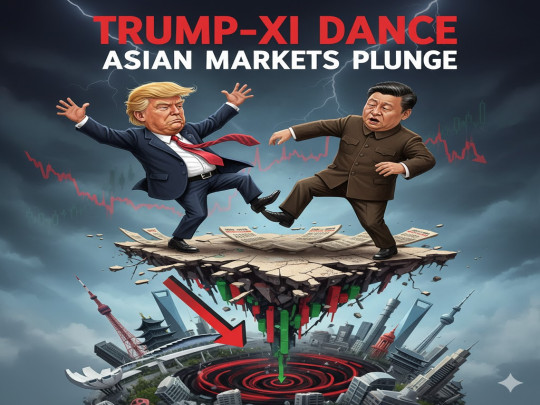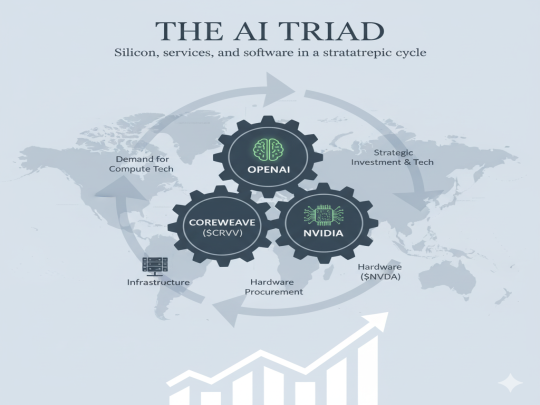Oil, War, and the Strait of Peril: How the Israel-Iran Conflict Threatens Global Energy and Stability
The Middle East is on fire: Israel’s massive airstrikes on Iran’s nuclear sites spark a fierce retaliation, threatening the Strait of Hormuz and sending oil prices soaring. With global markets in chaos and the risk of regional war rising, the world holds its breath. Dive into the crisis shaking the globe!

The Middle East Ignites: Oil, War, and the Strait of Uncertainty
The world has grown accustomed to crises in the Middle East, but the events of June 2025 have shattered any lingering sense of routine. In a span of days, Israel and Iran have exchanged the most direct and devastating blows in their long, shadowy conflict, dragging the region—and the global economy—toward the precipice. The reverberations are being felt far beyond the deserts of Iran and the hills of Israel: oil prices have soared, shipping lanes are threatened, and the spectre of a wider war looms.
Key Commodities Performance
Operation Rising Lion: Israel’s Calculated Gamble
At 2am on June 13th, the skies over Tehran, Natanz, and Khondab erupted in fire. Under the codename Operation Rising Lion, Israel unleashed its largest ever air campaign against Iran, targeting nuclear facilities, missile bases, and the very heart of Iran’s military command. Over 200 aircraft dropped more than 330 munitions on around 100 targets, with Mossad operatives reportedly sabotaging air defenses and missile launchers from within Iranian territory. The strikes were not limited to military installations: residential neighborhoods housing senior commanders were also hit, and the headquarters of the Islamic Revolutionary Guard Corps (IRGC) in Tehran was set ablaze.
The toll was staggering. Iranian officials reported at least 80 dead and over 320 wounded, including women and children, with nine nuclear scientists among the casualties. The Israeli government justified the attack as a preemptive strike, citing intelligence that Iran had amassed enough enriched uranium to produce up to 15 nuclear weapons “within days”. The message was clear: Israel would not allow Iran to reach the nuclear threshold, whatever the cost.
Iran Strikes Back: Operation True Promise III
Iran’s response was swift and furious. Within hours, it launched over 150 ballistic missiles and more than 100 drones at Israeli territory, in an operation it dubbed True Promise III. The barrage was unprecedented in scale, overwhelming Israeli air defenses and inflicting casualties. At least three Israelis were killed and over 200 wounded in the initial salvo, with further attacks continuing into the weekend.
The escalation was not confined to the two main antagonists. Iran threatened to target British, French, and American bases in the region if they intervened, prompting the UK to dispatch additional aircraft to the Middle East. Iraq, home to 2,500 US troops, pleaded with Tehran to avoid striking American forces on its soil. Meanwhile, diplomatic talks between Iran and the US, scheduled to address nuclear concerns, were abruptly cancelled. The region braced for further escalation.
The Strait of Hormuz: Chokepoint Under Siege
No region is more vulnerable to the fallout than the narrow Strait of Hormuz, through which a fifth of the world’s oil passes each day. Already, insurance premiums for tankers have soared by 15-20%, and shipowners are reconsidering their routes. The closure of the strait, even temporarily, would remove 17-18 million barrels per day from global markets—a shock that would dwarf previous supply disruptions.
Asian economies, particularly those of China, Japan, and India, are especially exposed. In the first quarter of 2025, vessels owned by Greek, Japanese, and Chinese firms dominated traffic through Hormuz. Alternative routes, such as pipelines across Saudi Arabia or the UAE, lack the capacity to replace lost volumes. Strategic petroleum reserves could cushion the blow for a few weeks, but a protracted conflict would leave the world scrambling for alternatives.
Markets in Turmoil: Oil’s Wild Ride
The financial markets have responded with characteristic volatility. On June 13th, West Texas Intermediate (WTI) crude jumped 7.62% to $72.98 per barrel, briefly touching $77.62—the highest since January. This surge reversed a months-long slide, during which WTI had dipped below $60 as demand concerns and the global energy transition weighed on prices.
Options traders, ever alert to geopolitical risk, piled into $80 call options for WTI at record volumes, betting that the crisis would drive prices higher still. Forecasts for the remainder of 2025 are now wildly divergent: the US Energy Information Administration expects prices to average $62, while some analysts see a spike to $89 or more if the strait is closed. Statista’s consensus forecast of $70.62 for the year now looks optimistic.
The Calculus of Escalation
Why did Israel choose this moment to strike? The answer lies in a mix of intelligence, politics, and strategic calculation. Israeli officials claim that Iran’s nuclear program was “approaching the point of no return,” with enough enriched uranium for multiple bombs and progress on weapons components[1]. The government of Benjamin Netanyahu, embattled at home and abroad, saw an opportunity to degrade Iran’s capabilities and reassert deterrence.
For Iran, the attack was a humiliation. The depth of Israeli penetration—both in the air and on the ground—exposed glaring weaknesses in Iranian air defenses. Private messages from Iranian officials, leaked to Western media, expressed anger and disbelief: “Where is our air defense? How can Israel come and attack anything it wants ... and we are incapable of stopping it?” The regime had little choice but to retaliate, both to restore deterrence and to placate a public shocked by the scale of the assault.
The Risk of Regional War
The danger now is that neither side can afford to back down. Israel has declared a state of emergency and mobilized tens of thousands of reservists. Iran has warned that any further attacks will be met with strikes on Western bases and regional allies. The United States, for its part, has urged restraint but is reinforcing its presence in the Gulf.
The risk of miscalculation is acute. A missile that strays into Saudi or Emirati territory, a drone strike on a US base, or an attack on a tanker in the strait could trigger a wider conflagration. The region is already awash in proxy conflicts, from Yemen to Lebanon to Iraq. The entry of new actors, whether by design or accident, could tip the balance from contained confrontation to regional war.
The Global Response: Calls for Restraint, Little Action
World leaders have responded with predictable calls for restraint. Germany and France have urged both sides to step back from the brink, while the United Nations has convened emergency sessions. But the levers of influence are limited. The United States, long the region’s security guarantor, is constrained by domestic politics and a desire to avoid another Middle Eastern quagmire. China and Russia, while critical of Israel’s actions, have little appetite for direct involvement.
The result is a dangerous vacuum. The mechanisms that once managed escalation—backchannels, red lines, and mutual deterrence—are fraying. The region’s autocrats and revolutionaries alike sense opportunity and peril in equal measure.
Energy Security Reconsidered
For decades, the world has relied on the stability of Middle Eastern energy flows, even as it has sought to diversify away from oil. The events of June 2025 are a stark reminder that geopolitics still matters. The transition to renewables and electric vehicles is real, but it is not happening fast enough to insulate the global economy from shocks in the Gulf.
Strategic reserves, alternative routes, and diplomatic initiatives can mitigate risk, but they cannot eliminate it. The world remains hostage to the decisions of a few men in Tehran and Jerusalem. The price of oil, and of peace, is set not in the boardrooms of Houston or Beijing, but in the bunkers beneath the Middle Eastern sand.
What Next?
The coming days will be decisive. Israel’s air campaign is far from over; officials speak of a “weekslong” operation aimed at degrading Iran’s capabilities. Iran’s capacity for retaliation is undiminished, and its proxies across the region are poised to act. The risk of a misstep—intentional or otherwise—is high.
For now, traders will continue to pile into oil futures, insurance companies will raise their premiums, and diplomats will shuttle between capitals in search of an elusive ceasefire. The rest of the world can only watch, hope, and prepare for the next shock.
In the end, the lesson is an old one: in the Middle East, the past is never past, and the future is always uncertain. The Strait of Hormuz remains the world’s most dangerous bottleneck—not just for oil, but for peace itself.



